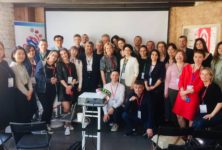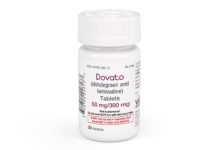Six case studies documented by the Eurasian Coalition on Male Health
Global Fund policies on the composition of country coordinating mechanisms (CCMs) have resulted in increased participation of LGBT organizations on CCMs in Eastern Europe and Central Asia (EECA). It has also resulted in greater participation of LGBT representatives in the decisions of the CCMs and even of the governments in these countries, including decisions concerning prevention services.
And, by extension, the participation of LGBTs on CCMs has improved the quality of national HIV programs in the EECA and has also helped to prevent the institutionalization of homophobia in some of the countries.
These are some of the key messages in a publication issued recently by the Eurasian Coalition on Male Health (ECOM) on LGBT involvement in national HIV decision-making processes in the EECA. The publication consists of case studies from six countries: Belarus, Kyrgyzstan (two case studies), Moldova, Russian Federation, Tajikistan and Ukraine. All but one of the case studies involve CCMs.
Some common themes emerge from the case studies. For example:
- In a context where stigma towards LGBT communities is high at all levels of the society, including among government officials, strong support from communities that have a longer history of partnering with the governmental structures – e.g. people living with HIV and even people who inject drugs – is vital in helping to make LGBT participation on CCMs and in governmental decisions a reality.
- Achieving progress in this area requires hard and long-term efforts.
- CSOs supported by the Global Fund played an important role in advancing the cause of LGBT organizations.
- The participation of the LGBT community, both in service delivery and strategy development within national HIV responses has improved the quality of programs funded by the Global Fund and national HIV/AIDS programs in general.
- For LGBT organizations, participation in CCMs is the most efficient way to be meaningfully engaged in the development and implementation of national strategies on HIV and TB.
- Systemic homophobia remains a significant barrier.
Below, we provide more information on each case study.
Moldova
The Moldova case study is particularly interesting because it describes in considerable detail how the participation on the CCM of one particular LGBT organization evolved over time. GENDERDOC-M (GDM), an LGBT health information center, has been a member of the CCM since 2005. However, at first GDM did not participate fully because of the high stigma towards the LGBT community, a lack of support from other CCM members, and a lack of knowledge on the part of GDM of the role and the rights of CCM members.
Then, the GDM representative began to participate in the CCM’s technical working groups, which allowed the representative to involve other persons from GDM in different activities. This more active participation created a need to know more about CCM regulations and structure, and how the CCM worked. The GDM representative started putting LGBT issues on the agenda of CCM meetings. Gradually, GDM become a strong and influential member of the CCM, able to raise problems related to LGBT and men who have sex with men (MSM) at the national level; participate in the development of guidelines and national strategic plans; and engage in Global Fund programs and related processes.
The Moldova case study demonstrates that the effectiveness of LGBT representation depends not only on their presence on the CCM, but also on the capacity of their representatives, and their knowledge and understanding of their role on the CCM and of the opportunities for participation.
Roshchupkin told Aidspan, “Nowadays, when questions are raised about the representatives of key affected populations on CCMs” – (see GFO article) – “this particular case study is an inspirational example for any CCM member who represents a community, but feels that they are lacking the required skills.”
Kyrgyzstan
One of the Kyrgyz case studies describes how the LGBT community came to be represented on the country’s CCM. In 2005, a multi-sectoral country coordinating committee was created, followed by the formation of the CCM itself in 2011. In 2013, an alternate CCM member was elected from a Kyrgyz NGO representing the MSM community.
In 2015, a civil society forum was organized to, among other things, determine how the CCM election procedures should be overhauled. During preparations for the forum, communities expressed the desire that CCM members and alternates representing communities should be members of the communities they represent. During the forum, elections were held to select the CCM members from civil society; for the first time, the elected members included representatives of the MSM and transgender communities.
The case study identified several factors that contributed to this success, including the following: (a) the Global Fund’s requirement that members to selected by their own communities; and (b) the active involvement of all representatives of all key populations in the 2015 forum.
The second Kyrgyz case study describes the inclusion of MSM and transgender representatives on the advisory group working on developing the national HIV program for 2017-2021. This was seen as a major breakthrough in the context of attitudes and perceptions towards LGBT people in Kyrgyzstan. (In the previous national HIV program, MSM and transgendered people were not even mentioned. They were included under the rubric “KAPs” without being named.)
Since 2014, the LGBT community in Kyrgyzstan has been living under the threat of criminalization, as Parliament debated two draft bills, one of which would have banned advocacy for LGBT rights, with associated fines. In the bill, this advocacy is defined as “propaganda of non-traditional sexual relations.” The second bill would have imposed “foreign agents” status for community services organizations (CSOs) performing advocacy with foreign money. (Both bills are modeled after legislation in effect in the Russian Federation). The LGBT community opposed the bills; their efforts were supported by other CSOs. Although both bills were finally rejected by Parliament, in 2106 an amendment to the Constitution was proposed, defining “marriage” as a “voluntary union between a man and a woman.”
Russian Federation
The case study involving the Russian Federation describes the process of sensitizing the Coordination Committee (CC) between 2014 and 2016. (The CC is the body that succeeded the CCM, which was abolished in 2010. It consists entirely of representatives of CSOs.) The CC members were elected during a country dialogue in 2014, in the context of the development of a proposal to the Global Fund under the NGO Rule. The CC that was formed in 2014 had no LGBT representation. However, two years of sensitization and advocacy culminated in a decision in 2016 to create two seats for the LGBT community.
It may seem surprising that it took two years to convince a body of CSOs about the importance of having LGBT representation. The explanation is that many CSOs were fearful that having LGBT representatives on the CC would diminish their reputation with the government, such that the government might not be willing to talk to them.
Over the course of the two years, from 2014 to 2016, representatives of the LGBT community actively carried out advocacy activities in various settings. They provided information to CC members on the LGBT community and the health needs of gay and bisexual men and transgender people. A training was organized for CC members, which allowed them to familiarize themselves with terminology related to MSM and LGBT and to better understand the role of MSM in the development of the epidemic. The issue of LGBT representation was widely discussed during the training.
In addition, HIV activists belonging to the LGBT community held meetings with representatives of the Ministry of Health and with parliamentary deputies to lobby for the inclusion of representatives of the LGBT community in the working group on the development of the government’s strategy for fighting the HIV epidemic.
The main result of the sensitization and advocacy efforts, ECOM said, was recognition by the CC that “MSM are an important epidemiological group, whose needs are not limited to the standard package of prevention services, such as brochures, condoms, and HIV testing.” However, ECOM said, the Russian Federation still has a long way to go to eliminate terminology such as “people of a non-standard orientation” from its national HIV strategy and to change discriminative legislation banning LGBT “propaganda” in the country.
Ukraine
The Ukraine case study describes an effort to include LGBT community representatives on the National Council (the body that covers the CCM function in Ukraine). Between 2014 and 2016, with support from the Global Fund, other international organizations and other key affected populations, the CSOs representing the LGBT community managed to change the policies and rules governing the formation of the National Council. The most significant barrier they faced was homophobia among government officials and religious leaders.
One very important result of this effort was that issues related to the provision of MSM services were included in the agenda of a national consultation on the response to HIV and TB. ECOM said that the LGBT community hopes that the participation of LGBT representatives on the National Council will help to defeat homophobia in Ukraine and to have members of the LGBT community acknowledged as experts in their own right.
Belarus
In Belarus, there are no registered LGBT organizations, so HIV-service NGOs represent the interests of the LGBT community on the CCM. Thanks to the efforts of the Belarussian Anti-AIDS Network, which represents people living with HIV, and other like-minded NGOs, services to MSM were included in Global Fund grants and, eventually, the national HIV program. For the latter, the NGOs received support from the Global Fund and the Ministry of Health. It helped that some members of the HIV-service NGOs were LGBT activists.
One of the NGOs, Vestrecha, provides HIV prevention services for MSM under a Global Fund grant. The organization raises issue of stigma and discrimination and access to treatment on behalf of the LGBT community.
This is an excellent example of other organizations “carrying the ball” for the LGBT community. It is unusual given that most community organizations normally just look after their own.
Tajikistan
The Tajikistan case study describes how a CSO serving as a Global Fund sub-recipient was recognized as having technical expertise and was invited by the Republican Center for the Prevention and Control of AIDS and the Ministry of Health to carry out the first estimation of the size of the MSM population ever conducted in the country.


 ПОИСК ПО САЙТУ
ПОИСК ПО САЙТУ  поиск по ресурсному центру
поиск по ресурсному центру 



